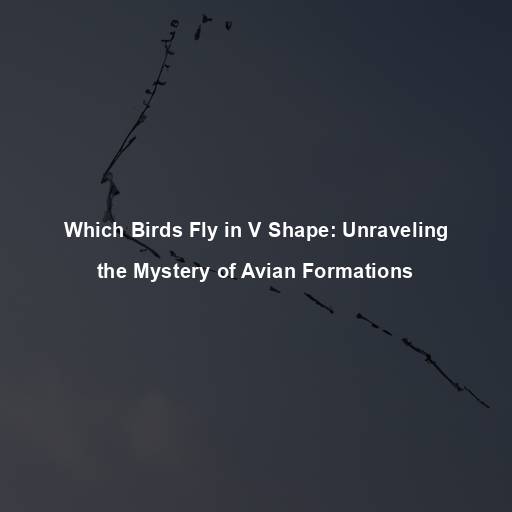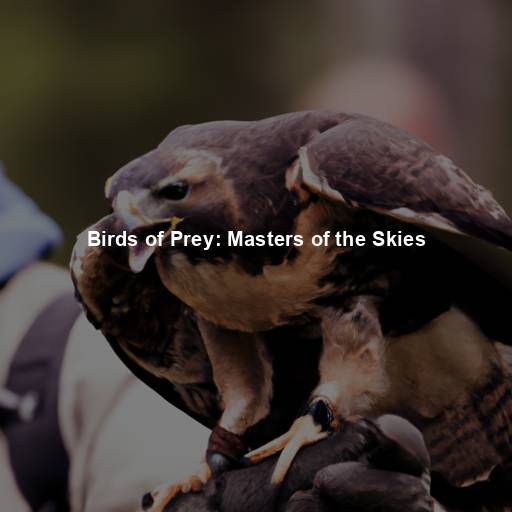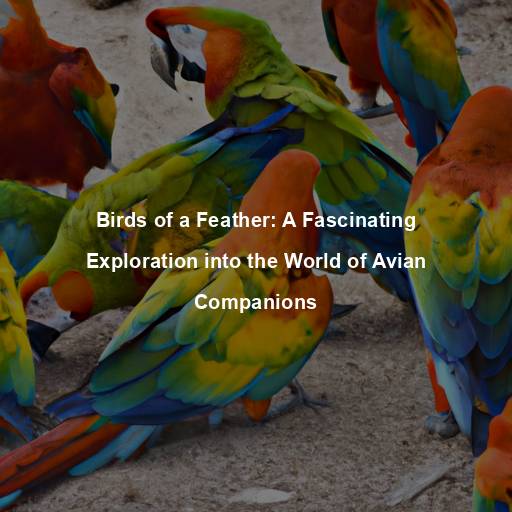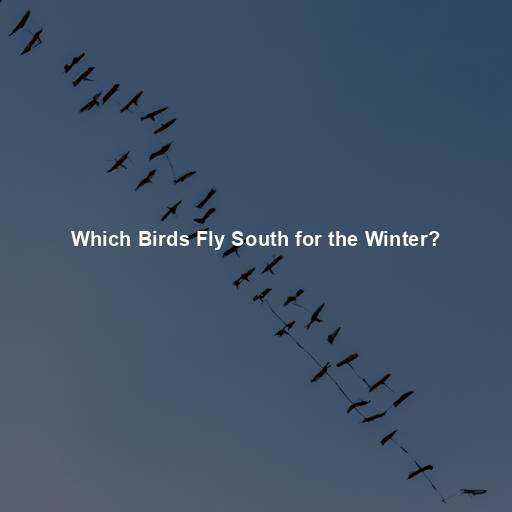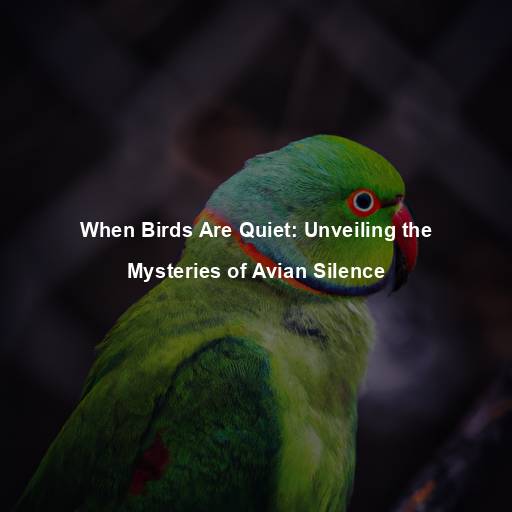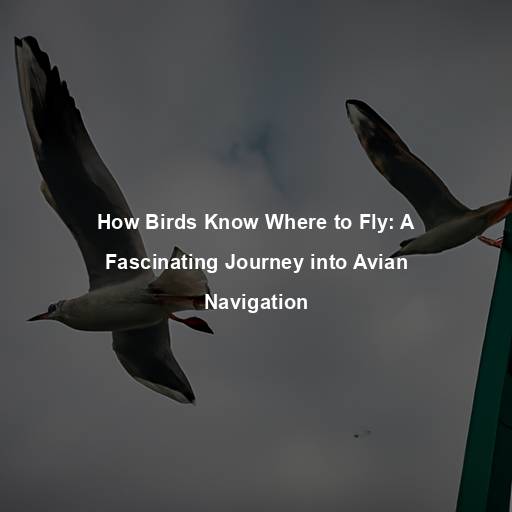Which Birds Fly in V Shape: Unraveling the Mystery of Avian Formations
Last Updated on August 1, 2023 by Evan
Contents [hide]
- 1 The Fascinating World of Bird Flight
- 1.1 The V Formation: An Aerial Marvel
- 1.2 The Advantages of Flying in a V Formation
- 1.3 Bird Species that Display V Formation
- 1.4 Unraveling the Mystery
- 1.5 Aerodynamic Considerations
- 1.6 Social Dynamics and Cooperation
- 1.7 Leadership and Rotational Advantages
- 1.8 Other Bird Formations
- 1.9 The Role of Experience and Learning
- 1.10 The Future of Avian Formation Research
- 1.11 Appreciating the Wonders of Bird Flight
- 2 FAQs: Which Birds Fly in V Shape?
The Fascinating World of Bird Flight
Birds have captivated the human imagination for centuries with their graceful flight and awe-inspiring formations. One of the most intriguing phenomena observed in bird flight is the V-shaped formation that certain species adopt during their migratory journeys. These avian formations have perplexed researchers and bird enthusiasts alike, prompting questions about their purpose, advantages, and underlying mechanisms. In this article, we delve deep into the world of bird flight to unravel the mysteries behind the V-shaped formation and shed light on the species that display this incredible behavior.
The V Formation: An Aerial Marvel
Gazing up into the vast expanse of the sky, there is something undeniably captivating about the spectacle of a flock of birds gracefully weaving through the air. Like a harmonious dance, they move in unison, their wings beating in perfect tandem. Known as a “wedge” or a “skein,” this awe-inspiring formation takes shape as the birds navigate through the open skies, each one meticulously positioned in relation to their fellow feathered companions. While we often associate this mesmerizing V-shaped pattern with the phenomenon of bird migration, it’s essential to acknowledge that such formations are not exclusive to these epic journeys.
The Advantages of Flying in a V Formation
Energy Conservation
When it comes to birds soaring through the skies, there’s more than meets the eye. Did you know that flying in a V-shaped formation isn’t just for show? These feathered creatures have unlocked the secret to saving energy while embarking on their epic migratory journeys. By zigzagging through the air in perfect sync, they cleverly exploit the aerodynamic effects, like a well-choreographed dance, lessening the burden of gravity and soaring further with less exertion.
There is a fascinating phenomenon that occurs in the avian kingdom, and it involves the peculiar formation known as the V. Why do these elegant creatures choose to fly in such a perplexing pattern? It seems that nature, ever the enigma, has bestowed upon them this burst of wisdom. By flying in a V formation, birds not only achieve optimal navigation during their arduous migratory journeys but also establish a seamless line of communication among their feathered comrades. It’s an extraordinary display of avian coordination, a mysterious dance of unity that leaves us marveling at the secrets of the sky.
Social Cohesion and Communication
Birds, those fascinating creatures of the sky, have a secret way of strengthening their social ties: flying in perfect V-shaped formations. In these close-knit flights, they’re able to exchange messages with ease, using both their voices and their expressive movements. This synchronized spectacle not only deepens their bonds but also empowers them to work together seamlessly, whether it’s for finding food or evading danger. It’s truly a remarkable display of cooperative behavior that leaves us in awe of their social prowess.
Bird Species that Display V Formation
While the V-shaped formation is not exhibited by all bird species, several migratory birds have been observed adopting this aerial marvel. Let’s take a closer look at some of these fascinating avian species:
Canada Geese (Branta canadensis)
As we gaze up at the vast expanse of the sky, we are often captivated by the breathtaking sight of Canada Geese in flight. These majestic creatures, with their synchronized honking, embark on an incredible journey, navigating through uncertainty and embracing the power of collaboration. Forming a distinctive V-shaped pattern, they seamlessly take turns at the helm, harmoniously sharing the burden of their arduous expedition while reaping the rewards of the formation’s aerodynamic prowess. Truly, a marvel of nature’s enigmatic beauty.
Sandhill Cranes (Antigone canadensis)
Sandhill Cranes are another migratory species that engage in V formation flight. These elegant birds undertake long-distance migrations, sometimes spanning thousands of miles. By flying in a V-shaped pattern, they can conserve energy and maintain social cohesion, making their arduous journeys more manageable.
White Pelicans (Pelecanus erythrorhynchos)
With their awe-inspiring beauty and expansive wingspan, the White Pelicans truly capture the gaze of onlookers. But what adds to their mystique is their unique flight formation – the V shape. It’s not just about aesthetics; these majestic birds have mastered the art of soaring through the skies with the utmost grace and efficiency. With the help of thermal updrafts, they effortlessly navigate across long distances while expending minimal energy.
Swans (Cygnus spp.)
Swans, with their grace and elegance, are renowned for their V-shaped flight formations. Whether it be the majestic Trumpeter Swans or the iconic Mute Swans, these avian beauties adopt the V formation during their migratory journeys. By flying in unison, they can navigate long distances and maintain social bonds, showcasing the remarkable coordination and cooperation within the flock.
Unraveling the Mystery
Bird flight has always mesmerized scientists, but the enigmatic V-shaped formation still manages to baffle the brightest minds. Undeterred, researchers delve deep into the labyrinthine world of avian aerodynamics, visual signaling, and intricate social dynamics to unlock the secrets of this elusive phenomenon. As they navigate through a maze of theories, the allure of the V-formation continues to confound and captivate, fueling the quest for answers.
The magical synchrony of birds flying in a V-shaped formation has always fascinated scientists. The intricate dance of these feathered beings, as they navigate the vast skies, remains shrouded in mystery. However, with the advent of cutting-edge technologies like GPS tracking and high-speed videography, a glimmer of hope arises to unlock the secrets within. By delving into the enigma of avian formations, we may unlock profound insights into the extraordinary abilities of these winged creatures, igniting a greater sense of awe for the wonders of our natural world.
Aerodynamic Considerations
Understanding the aerodynamics behind bird formations is key to unraveling the mystery of the V-shaped flight pattern. When birds fly, they create vortices of air called wingtip vortices, which are caused by the pressure difference between the upper and lower surfaces of their wings. These vortices create areas of upwash and downwash, affecting the airflow for the birds flying behind.
Have you ever wondered how birds effortlessly glide through the sky in perfect formation? It’s all about harnessing the power of teamwork and aerodynamics. In a mesmerizing display of precision, each bird strategically positions itself in a V-shaped formation, with each individual bird slightly higher than the one in front. This clever arrangement allows them to capitalize on the upwash created by the lead bird, which provides an extra boost of lift, easing their flight and conserving energy.
Social Dynamics and Cooperation
The remarkable formation resembling the letter “V” not only grants birds an advantage in terms of streamlining their flight, but also serves as a catalyst for enhanced social connections and collaboration within their feathery ranks. Through maintaining close proximity during flight, avian creatures are able to engage in more efficient communication, utilizing a colorful array of vocalizations and visual cues. This synchronized aerial dance not only fortifies the social fabric of the flock, but also creates a platform for collective efforts in areas such as hunting for sustenance and evading potential threats.
Leadership and Rotational Advantages
Have you ever wondered about the secret behind the mesmerizing V formation flight of birds? Well, here’s a fascinating twist: it turns out that the lead bird, despite being at the forefront, actually takes one for the team by fighting against the highest air resistance. But fear not, for nature has its own way of leveling the playing field. These clever creatures ingeniously rotate their positions, giving each member of the flock a chance to experience the benefits of reduced air resistance and conserve their precious energy.
Other Bird Formations
While the V-shaped formation is the most well-known and extensively studied, other bird formations also exist, each serving a unique purpose.
Line Formation
In a line formation, birds fly one behind the other in a straight line. This formation is often observed during migration when birds are traveling long distances. By flying in a line, birds can reduce drag and conserve energy while maintaining a streamlined flight pattern.
Diamond Formation
When it comes to avian aerobatics, there’s one formation that has captivated scientists and bird enthusiasts alike: the diamond formation. Picture this: a group of birds soaring through the sky, effortlessly arranging themselves in a rhombus-like shape, with one fearless leader taking point while the others skillfully align diagonally behind. This mesmerizing spectacle not only showcases their innate ability to navigate the vast expanse of the air, but it also offers a fascinating insight into nature’s brilliance. By adopting this intricate flight pattern, these feathered creatures unlock a world of aerodynamic advantages, allowing them to glide with grace while conserving precious energy.
Echelon Formation
In an echelon formation, birds fly diagonally behind the lead bird, creating a staggered pattern. This formation is commonly seen during territorial defense or foraging flights. The echelon pattern helps birds maintain visual contact with one another while also providing individual birds with an unobstructed field of view.
The Role of Experience and Learning
Have you ever wondered how birds effortlessly glide through the sky in perfect harmony? Well, it turns out that this remarkable ability is not something they’re born with, but rather a skill they learn through observation and practice. Young birds carefully watch their experienced counterparts, eagerly imitating their every move as they navigate through intricate flight patterns. As they gain more flight time under their wings, these birds become true masters of formation, highlighting the significant role of social learning in the world of avian communities.
The Future of Avian Formation Research
Advancements in technology have opened up new avenues for studying avian formations. Researchers now have access to GPS tracking devices and high-speed videography, allowing for detailed analysis of flight patterns, wing movements, and flock dynamics. By combining these technological tools with field observations and experiments, scientists hope to uncover more insights into the mysteries of bird flight formations.
Understanding the mechanisms and advantages of bird formations not only satisfies our curiosity but also has practical applications. Insights gained from studying avian flight patterns can inspire innovations in aerospace design, leading to more efficient aircraft and improved flight strategies.
Appreciating the Wonders of Bird Flight
Bird flight, with all its intricacies and marvels, continues to captivate our imaginations. The V-shaped formation, in particular, stands as a testament to the remarkable capabilities and adaptations of avian species. As we observe birds soaring through the sky in their synchronized flight patterns, let us marvel at their innate abilities, the result of millions of years of evolution.
When the graceful choreography of a formation of birds captivates your gaze, pause to marvel at the awe-inspiring spectacle unfolding before you. In this intricate aerial dance, we are reminded of the profound interconnectedness and harmony that pervades the realm of nature. These elegant creatures embody the boundless diversity and resilience that permeate every corner of our wondrous planet.
FAQs: Which Birds Fly in V Shape?
### Why do some birds fly in a V shape?
Birds often fly in a V shape to enhance their aerodynamic efficiency and take advantage of the air currents. This flying formation, known as the “V formation” or “flying in echelon,” reduces wind resistance and allows birds to conserve energy during long-distance flights. By positioning themselves slightly above and behind the bird in front, they create an uplifting air current that provides both lift and reduced drag, making it easier for them to maintain higher speeds and endurance throughout their journey.
### Which species of birds fly in a V shape?
Various species of birds around the world are known to fly in V formations, especially during migration. Some notable examples include large birds like geese, swans, and pelicans, which are renowned for their distinctive V-shaped flying formations. Additionally, certain smaller birds such as ibises, cranes, and ducks also adopt this flying pattern during migratory flights. While not all species follow this behavior, many birds have evolved to capitalize on the advantages of flying in V formations.
### How do birds establish their positions within the V formation?
The positions of individual birds within a V formation are not random and usually follow a well-defined pattern. The lead bird, occupying the front position, experiences the maximum air resistance but also navigates the flight path for the rest of the flock. Birds in the succeeding positions benefit from reduced wind resistance due to the uplift generated by the previous bird. The birds at the tips of the V formation might endure more turbulence but also have better peripheral vision. Overall, the birds in the formation maintain a specific spatial relationship with each other, adapting their positions based on factors like wing size, strength, and experience.
### Do all birds within a species migrate in V formations?
As the bird enthusiasts among us have marveled at the majestic V formations in the sky, it’s important to note that not all birds of a particular species follow this pattern. While it is indeed a common spectacle observed in many migratory birds, it’s far from a universal norm. Various factors come into play such as age, experience, and specific migration routes, influencing whether our feathered friends choose to flock together in V formations or opt for solo flights. In fact, alternative flight patterns like flying in a line or diagonal formations are also preferred by some birds. Overall, it’s a complex decision shaped by environmental conditions and the distance they need to cover during their remarkable journey.
### How fast do birds fly in V formations?
The speed at which birds fly in V formations can vary depending on several factors such as species, weather conditions, and the purpose of the flight. On average, migratory birds tend to maintain a moderate cruising speed between 30 to 40 miles per hour (48 to 64 kilometers per hour). However, during migratory flights, birds can reach even higher speeds when they are taking advantage of tailwinds or making long-distance trips. It’s important to note that the speed within the formation is not consistent between all individuals as birds adjust their individual flight speeds to maintain their relative positions within the V shape.
Let’s dive into the captivating world of avian behavior, where the flight patterns of these magnificent creatures offer both a spectacle and a puzzle. While we can observe certain trends and tendencies among our feathered friends, it is crucial to acknowledge the individual nuances that make each bird’s flight formation a tapestry of enigmatic beauty. So buckle up and prepare to be astounded by the burst of bursts and the perplexity of patterns as we unravel the secrets of aerial navigation in the avian realm.

